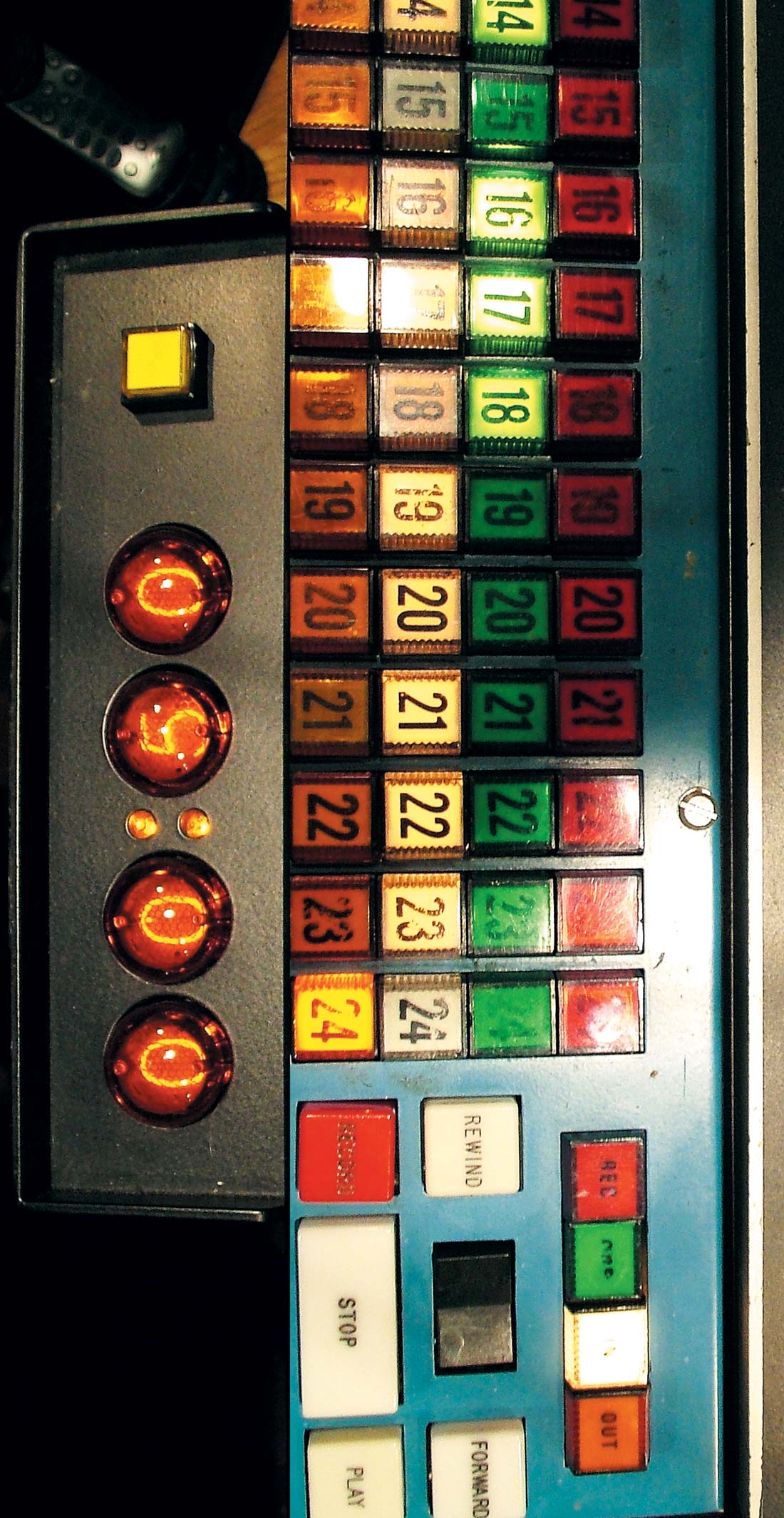Giving Z-Vex a run for its money, Austin-based Devi Ever has been creating some of the most unique effect pedals around for just a bit over two years. I recently had a great time trying out a couple of her designs.
First up was the aptly-named Truly Beautiful Disaster pedal. Considering what it does, it's surprisingly compact yet is graced by five knobs, three mini-switches, two foot switches, and a photo-sensitive cell. There are knobs for output volume; fuzz (which is pretty dang intense); octave (which intensifies the already intense fuzz circuit's oscillation); blend (provides the ability to mix in some of the original instrument signal); and feedback control (which controls the feedback loop-more on this later). I should mention that the knobs tend to work "backwards" in that you need to rotate them counter- clockwise to increase their effect. This was a bit confusing, but I soon got used to it.
The minimalist user's manual (a small piece of photocopied paper) had a few suggested settings, but stressed that experimentation was the key to achieving a Truly Beautiful Disaster. So I plugged a Telecaster into the pedal, then into a Fender Twin. I was expecting some variation of the tried-and-true "Satisfaction"-style fuzz. What I got instead was seemingly uncontrollable oscillation. Plucking the guitar string didn't seem to have any effect on the noise blaring from the amp. Several minutes of frantic knob-twiddling later, I got sort of a dying-Theremin sound. I called Effector 13 in a semi-panic. Perhaps it was a defective unit? Ever good-naturedly responded that it was extremely unlikely that the unit was broken and that I should just keep messing with it. Okay, cool. I eventually got the gist of it. More twiddling yielded an almost ring-modulated "skronk." Another setting turned my guitar's tone knob into a surprisingly musical pitch- shifter; I was able to "play" melodies with the guitar's tone control. Very cool. The feedback loop (and associated knob) lets you plug another effect pedal into the unit and selectively feed it through the fuzz circuit and back into itself. The photo-sensitive cell can be switched on and controls the intensity of the feedback loop. I tried using the feedback loop with a delay pedal, a phaser, and a more conventional fuzz pedal. Results varied from surprisingly subtle to stuff unlike any I'd ever encountered coming from a pedal. A sonic experimenter's dream.
In an email, Ever explained the Truly Beautiful Disaster well. "The TBD is by no means meant for everyday guitar use. I find that the people who fall in love with it are usually old skool rockers looking for really interesting and unique fuzz textures... or modern day experimentalists who love to tweak knobs as much as they love to play guitar. The oscillating fuzz is a lot of fun and useful in its own right, but I find most people who buy the TBD really abuse the combination of photo- eye/feedback loop in tandem with the fuzz to create massively layered sonic chaos and harmony."
A much more simple-to-operate, yet no less over-the- top, Effector 13 pedal is the Torn's Peaker. (Get it? "Torn Speaker"?) This is a super-high-gain fuzz pedal housed in an MXR-sized case with just two knobs: volume and texture. The yellow LED is possibly the brightest I have ever seen. Almost had to avert my eyes. Pretty nice feature, though, for those sunny outdoor gigs. Then again, the music you can make with this pedal is hardly the kind you're likely to hear at a family barbecue. I'd hesitate to say the Torn's Peaker actually makes it sound as if your speaker is blown. With the texture knob turned counter- clockwise, yes, a little bit. Loud, ratty and thin. When you turn the texture knob clockwise, there's a sweet spot that sounds full, bassy, and huge. Super-loud, but nice. This is not a subtle effect. It's the kind of crazy, musical fuzz/gain that pulls in radio broadcasts. A couple of odd things about this pedal. The texture knob seemed to sort of "neutralize" the sound when in the 12 o'clock position. Hard to describe; there was kind of a "dip" in the sound, as if the effect were rolled off, say, 30 percent. I imagine this is sort of considered the "starting point" position. The other strange thing was that I noticed my guitar's tone controls had hardly any effect on the sound when the Torn's Peaker was engaged. Never really ran into that phenomenon before. Neither of these behaviors are a problem; just little eccentricities of a pretty potent device.
It's hard to describe in words what exactly these pedals can sound like. Effector 13's website has a slew of sound samples that are very worthwhile and helpful. Sort of a "try before you buy" thing. Speaking of which, at first glance it would appear that these Effector 13 pedals are somewhat expensive. But given the quality/uniqueness of the sounds and the fact that they are handmade in the USA using high- quality components and true-bypass switches, I consider them to be bargains. (Truly Beautiful Disaster $195 MSRP, Torn's Peaker $115; www.effector13.com)




_disp_horizontal_bw.jpg)